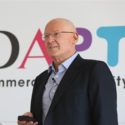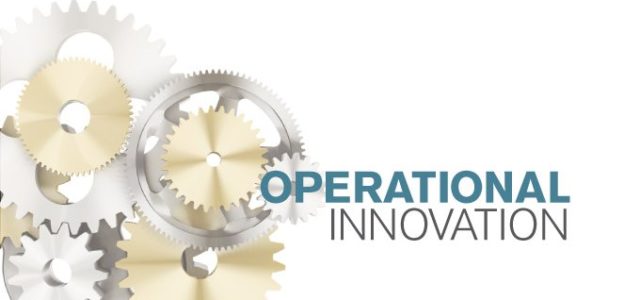‘Leading Digital Transformation’ is a weekly podcast series produced in collaboration between The Digital Transformation People and Rob Llewellyn digital transformation advisor and founder of CXO Transform.
During this series, Rob interviews experienced practitioners, authors and thought leaders whose stories and experiences provide valuable insights for digital transformation success.
In this episode, Rob speaks with Max Blumberg, PHD visiting Professor at Leeds University Business School and Associate Fellow of the British Psychological Society. Additionally, Max is founder of the Blumberg Partnership, a top analytics consultancy delivering analytics and machine learning solutions to many top tier organisations.
Max is a true thought leader and leading practitioner of the People Analytics world who believes helping organisations understand the root cause of their business challenges is the key to unlocking the value of their most important intangible assets for real business impact – people.
“A report you can dash out in a couple of hours. There’s no question that one of these projects for finding the root cause can be six months, a year or even two years. But whereas the report is likely to save you hundreds of thousands, maybe in the low millions, if you increase your productivity by 20 per cent or your sales by 20 per cent, you’re potentially talking about the hundreds of millions.”
Listen here and read the full transcript below.
Transcript
Rob Llewellyn [00:00:22] I’m joined today by Max Blumberg. Max is a visiting professor at Leeds University Business School. He’s a chartered psychologist and associate fellow of the British Psychological Society and he’s the founder of The Bloomberg Partnership, which is a top 50 analytics consultancy. The company delivers analytics and machine learning solutions to organisations like Nestlé, Lloyds Register, G.B. Group PLC, the BBC, Barclays Corporate and many others. Before this, Max worked as a management consultant at Accenture after which he successfully founded and exited a technology start-up. Max is a regular contributor to the global media and conference circuit. I’m really pleased that he’s joined us for this episode of “Leading Digital Transformation”. So, let’s jump into the interview with Max. Max, welcome.
Max Blumberg [00:01:20] Thank you very much, Rob. Nice to be here.
Rob Llewellyn [00:01:23] Max, before I get into some questions – well, this is going to be a question – I want to refer to an article that you wrote for “HR Zone“. You said that organisations exist to achieve desired business outcomes, and of course, a lot of people know that as transformation, refer to it as transformation. And we’ve got, of course, commercial organisations which need to deliver return on investment to their stakeholders, public sector organisations which need to serve the needs of their citizens and the primary role of managers, as you put it in the article is to help achieve these outcomes by making two kinds of decisions: investment allocation and investment deployment. What’s the effect of human capital decisions on business outcomes?
Max Blumberg [00:02:14] Well, I mean they’re effective in many ways, Rob. The kinds of human capital decisions that we make in organisations are things about who should we have working for us? What is the best quality employee? What is the best training that we should deliver? How should we ensure that we have succession planning? How much should we pay these people? I could go on for hours and go through all the different things that traditionally an H.R. function does, but which arguably may be performed in other parts of the organisation. So, all of those are examples of decisions, what recruitment, what training, what succession planning, how much to pay, etc. If you get those decisions right, you’ll end up with the right kinds of quality people in your organisation – we call them workforce capabilities – which will give you the business outcomes that you are looking for. So quality human capital decisions about who you recruit, how you recruit them, how you train them, quality decisions lead to quality workforces which lead to quality business outcomes.
Rob Llewellyn [00:03:22] Now Max, as I mentioned in the intro, you’re the founder of an analytics consultancy. Now, not everybody is clued up in terms of people analytics, so let’s kick off with that definition. In your view, what is people analytics?
Max Blumberg [00:03:40] Well, if you take it a step back from that and you say: “what is business analytics in general?” and then we can look at people analytics as a special case of that. Business analytics is using decision-making methods to ensure that you deliver your organisational objectives. So organisational objectives are usually implementing our vision statement. They’re often very financial in the West and in commercial organisations. So, it’s about mainly delivering return to your shareholders. So, analytics helps you to make marketing, people decisions, logistics decisions, manufacturing decisions that maximize your return to investors and maybe some other objectives that you might have. People analytics is purely informing those decisions that you make about people that we spoke about a few minutes ago. People analytics is helping you to make decisions about the right people to recruit, the right training to give them, the right pay, etc. so that you maximize the input from those people in order to maximize the return to your shareholders and perhaps those other goals. If you say, “Well, how does that work?”, people analytics is as varied as the different people processes that we have in an organisation. So, if you’re applying people analytics to recruitment, for example, it’s a question of saying “What is the best kind of person that we need to deliver our business outcomes?” If it’s learning and development, it’s “What’s the best kind of learning and development that we need to deliver those outcomes ?” and using evidence-based decisions to inform your recruitment and your training decisions. So that’s all that people analytics is. People often make it sound like it’s more complicated than it is, but it’s really just a decision-making tool. Probably important to say that it doesn’t replace the decisions that managers make, as you pointed out earlier. It’s more of an “and both”. Somebody once said that if you have a table full of people making decisions, data needs to be one voice at that table. So, it isn’t the only voice, but it does need to be “a” voice if you like.
Rob Llewellyn [00:06:08] And the title of this podcast, Max, is “Leading Digital Transformation”. How does people analytics fit in with digital transformation?
Max Blumberg [00:06:17] Well, everybody seems to have a different definition of “digital transformation”. I like the very broad definitions which talk about it’s changing the whole fabric of the organisation: the way that you design your products and services, the way that you deliver them to your customers, the way that you do your administration, the way that you do your marketing. All of those are processes, you could say. And so, a lot of this is about process automation, a lot of digital transformation is about process automation. And that has a lot of impact on people, obviously. Increasingly, we’re starting to see people being replaced by robotic process automation or RPA. So, digital fits in really strongly to the people analytics side of things, when we see processes like recruitment succession, planning compensation, all of those are being automated or ‘made digital’ if you like. So, whereas you might have needed a large team to help do your recruitment, even as recently as 10 years ago, you now find that these automated digital systems, which can read the CVs, make decisions about them, you can interview people using video, you can even analyze those videos using analytics. All of that is digital, so where you needed a huge team to do recruitment you can now do it with a much smaller group of people. Indeed, you can outsource it, which has a similar impact to using digital. So for me, people analytics and digital meet at the point where you are automating your processes, but also doing different processes. A lot of people think that it’s just about making things faster. It’s not. It’s also about changing the whole quality of the process. There was no way that we could have looked at prospective employees or applicants and analyzed videos of them ten years ago. We wouldn’t have even thought of doing that because we weren’t videoing the employees in the first place. So now we have whole new ways of using people analytics to analyze those videos to work out ‘is this the right person for our organisation to deliver those business outcomes that you spoke about’. So, I think that’s where people analytics meets digital is at the point of people processes that automation and the transformation of those people processes.
Rob Llewellyn [00:08:51] And Max, to what extent do you see organisations taking advantage of people analytics and you just mentioned an example of processing videos from applicants, etc. Some organisations are doing this more than others. What’s generally happening out there?
Max Blumberg [00:09:09] Well, in the past couple of years, I think there’s been a huge emphasis on confusing people analytics with reporting. And so we’ve had people automating their statutory and their operational reports, “What is our staff attrition?”, “What is the stress rates that we have?”, “Who are our best salespeople?” kind of describing stuff that’s going on, but doing it more quickly and automating that. But that really is only part of the story of what people analytics is about. People analytics is supposed to be about helping you make decisions. Now arguably, if you show me a report of how many staff have left you in the last year, that doesn’t really guide me to a decision in the sense it says “We really need to change the way that our managers speak to people because that is what is causing the people to leave”. So, a report might tell you that people are leaving, but it doesn’t tell you why they’re leaving and therefore what you can do about it. So, I think people analytics is largely, and still is in many organisations, it’s still largely about automated reporting. Now granted, reports do take a phenomenally long time. It used to be sort of part of this era called “management intelligence” or “management information”. And we’ve been able to do that for the last ten years with Business Objects, Cognos and these kinds of tools. So really, the fact that people analytics – that H.R. have now got these tools for the first time – I think that’s quite exciting for H.R. working with data. They feel like they’re doing something new, but in reality, they’re just doing what happened 15 years ago and creating reports. And just because you call it a dashboard, it doesn’t mean that it isn’t just a report telling you what’s going on in the organisation. The really exciting new part of people analytics is telling you why your sales are low, why people are leaving, why people are stressed and so on in the organisation. And surprisingly, that’s really low. Not many organisations are doing that at all. The usual suspects are, I suppose you would say the “STEM” organisations, those that naturally employ scientists, the Googles of this world, the technology companies. So, where you’ve got of PhDs, people who are trained in the scientific method, those organisations do tend to use this kind of a root-cause-analysis is the term working out why. Because on your journey to do a research degree, that is what you’re learning, you’re learning to find out root causes. But for the rest of the organisations in this world, [there’s] very, very little root cause and analysis, very little scientific method going on at the moment. I have to say that it’s increasing. I’m personally getting an increasing number of calls from companies who’ve reached the end of the road with their reporting. They’ve spent a fortune on infrastructure, they’ve got every tool in the world. They just don’t know how to use them for that root cause analysis, that scientific method. So, that’s quite exciting, because I guess they’re not that many people who understand research design and root cause analysis in the world. I certainly encourage people entering the field to learn research methodology because that is the next big wave. It’s hard. It’s a lot of work. It’s much tougher than learning how to use Power BI or Tableau etc. But it’s well worth it. You’re more useful to the organisation. Even data science as a discipline is not about root cause analysis. So, people say “Should I become a data scientist?”. Well, data scientists in a sense are really reporting people on steroids. They’re using huge databases to do sophisticated reports, but they’re still not getting to the root cause analysis. Maybe one of the reasons for that role is that it takes much longer to use the scientific method. A report you can dash out in a couple of hours there’s no question that one of these projects for finding the root cause can be six months, a year or even two years. But whereas the report is likely to save you hundreds of thousands, maybe in the low millions, if you increase your productivity by 20 per cent or your sales by 20 per cent, you’re potentially talking about the hundreds of millions. So that’s the decision, you’ve got to make. Do we want to do the hundreds of millions? It’s going to take us two years. Or do we want to work in the low millions and get quick results? That’s the sort of decision. And organisations are increasingly saying: “right, as we get the skills in, we want to go for those higher value, more complex projects”.
Rob Llewellyn [00:14:00] Now Max, you touched on some of the challenges of companies trying to use people analytics. What fundamental mistakes do companies make when the good intentions are there to implement people analytics, but what are the big fundamental mistakes that organisations are making right now?
Max Blumberg [00:14:18] Well, I think the first one is the one that we just spoke about which is people asking for reports rather than asking for the causes. So, they’re saying “what is going on?” rather than “why is it going on?”. The second reason is probably when a stakeholder comes to a people analytics professional and says “we want to change the way we recruit people”, they’re assuming that recruitment is the problem and they haven’t actually diagnosed to see that it could well be compensation or not enough people in that particular role to do the job effectively. So, there’s something about diagnosing the problem and don’t just go with what a stakeholder asks you immediately. Push back and ask for causes around the problem. Another major issue is that we tend to use data from our transactional systems to help improve our people processes in order to get better business outcomes. So, we’ll dive into Workday or Oracle or SuccessFactors, whatever we’re using, and we’ll grab HRIS-type data or transactional data from the CRM. But we call that “very thin digital data” as opposed to the rich data that you can get when you actually speak to employees when you ask them “what is the situation?”, “why do you think that our sales are bad?”, “why do you think that our costs are so high?”, “why do you think that people are leaving?”. Those hypotheses need to come from people in the organisation and the job of the people analyst is to use the wisdom of crowds if you like, crowdsourcing, [and] take that information, collate it together, use analytical methods where possible. It’s not just to dive into Workday or into your HRIS platform and to analyze whatever data you happen to have on hand. 9 times out of 10 to solve any given business outcome problem, you probably have to generate and create fresh data. The chances are that you won’t have the data on hand to tell you why your employees are leaving or why your costs are so high or why your productivity is so low because that’s just not the kind of data that we tend to capture in our HRIS and in our transactional systems. So those are the main mistakes. If I were to say one of the main two, it’s definitely not engaging the users when you’re trying to work out a problem and it’s asking for reports. And by the way, if you’re going to make a change to your learning and development programs and you want your managers to support the change, what’s the chances that the managers are actually going to support your recommendations if you didn’t involve them in designing the new transform process? That is so common. It’s like a big consultancy comes in and says: “Here’s your new process” and the line managers and the operations people say “You’ve never worked in this industry. You haven’t really asked us that many questions and yet you feel that you can tell us the best way to run a hotel or to run a publisher or to run a retail outfit or whatever”. So, there’s something really critical about engaging with people to get that rich data, rather than digital traces that currently people analytics tends to work with.
Rob Llewellyn [00:17:40] So Max, you just partly answered one of my questions by saying companies need to engage more with the workforce. How else can they avoid these typical mistakes that you’ve been highlighting?
Max Blumberg [00:17:53] That’s a really good question, Rob. I think one of the things you need to do is you need to have a stakeholder that is very committed to sponsoring people analytics and that sometimes is harder or easier said than done. I’ve worked in a couple of organisations where we’ve had somebody from middle management who’s been really keen on it and we try and implement [it]. But sooner or later you end up with cultural resistance, because “We don’t want to use your new recruiting process” or “We don’t like your new succession planning method”. And that is the point that it’s really useful to have a senior stakeholder who can come in and kind of help to… – not mandate the change, [which] sounds a bit sort of control-ish – but help to get people to embrace it and to get more involved in the process. So that’s a key aspect of it. Another aspect to remedy the mistakes is going out to the users and saying what are the business issues that you’re facing, rather than H.R. trying to second guess what they are. One of the reasons that H.R. does that is because they’re not always terribly informed about the ins and outs of how the business operates and about the operation and about finance. So, one important fix is that H.R. people definitely need to become more commercial. I would say that in my work as a people analyst, a very small proportion of it is actually around talent and at least half (if not more) is based on my knowledge of operations. My knowledge of finance, etc.. In fact, it’s quite funny: I had a client [who] said to me a couple of weeks ago: “Max, I had no idea that you knew so much about operations and about finance”. And I found that quite funny. I have experience, so whilst I’m not particularly clever for knowing that stuff, it’s just I’ve been doing it for a long time. But I find it quite strange that people on analytics teams try and do these large digital transformations, these large people analytics projects, without having a decent knowledge of the business. I suppose the analogy is, if you had marketing trying to market something that they didn’t really understand the features and the benefits and the value delivered by the product that they’re trying to market, people analytics professionals can’t deliver decent people analytics unless you fully understand what it is that those people are doing in the organisation, what is the operation that they’re supporting, etc.. So, those are some of the things you can do. It’s largely about understanding the business, communicating with the users, ensuring that you have good stakeholders, will go a long way into correcting some of those mistakes.
Rob Llewellyn [00:20:40] Max, like me I think we’ve got a lot of listeners right now nodding in agreement.
Max Blumberg [00:20:45] Good!
Rob Llewellyn [00:20:47] But I know it’s all easier said than done. Do you have a case study that you can share with us, Max?
Max Blumberg [00:20:53] Well, yeah. I think one that illustrates this quite well is a large shipping company, they kind of do MOTs on ships and so it’s like when you take your car in and you need to get an MOT. A 3 billion pound oil tanker is not allowed out on the high seas until it’s got a really good design. And this particular organisation was working at a turnover of around 1.5 billion and was keen to go up to three billion over five years. They were convinced that training of their people was the issue; if they could only train them they’d hit their targets. And a little diagnosis showed that actually it wasn’t so much training that was the issue. Their managers’ behaviours were a huge part of it. We did a diagnostic. So, we went in and we did what I just said earlier on. We’ve got a lovely audit tool that we use and we interviewed typically the CEO, most of the board, a selection of senior management and then we survey a number of operational people about what they think is behind the problem. And it really became clear that the person who’d called us in didn’t have a great handle on what the issue was at that stage. [I’m] not saying it was their fault, because they didn’t have these survey and audit tools available to them. But it became really clear that management ineptitude was part of the problem, that they were recruiting the wrong people and training was about four or five on the list. And as a matter of interest, the way that they were segmenting their market was also an issue. Now you might say, “As a people analytics person, Max, why are you looking at market segmentation?” And that would be a good question! It just kind of shows you that in people analytics, you need that broader knowledge to recognize that business outcomes are not just affected by your workforce. They’re also affected by your marketing, your logistics. And so, what we did was we prioritised all the issues that were likely to get in the way of them achieving their 5 billion target, and then started working on those in the right order. And I think if we’d started working on the training, I don’t think they would have come close to achieving the target. However, doing it in the right order, we got there faster than anybody expected really. So that’s a good case study.
Rob Llewellyn [00:23:06] That’s great, Max. Listen, we could go on with this I know for a lot longer, but we’re going to have to wrap it up shortly. Any parting tips for what I’m sure are quite a few managers and leaders listening right now that are faced with some of the challenges that you’ve been touching on today?
Max Blumberg [00:23:24] It’s a tough question. If you’ve got a fairly mature people analytics function in your organisation, then go and have a word with them. If you don’t, you’re more than welcome to contact me and I’m very happy – even if I’m not the person who solves it for you – I’d be very happy to point you in the direction of somebody who can help you do that. I suppose in terms of tips, it really is trying to find out the root cause of the problem and that is a skill that any analyst should have and particularly people analysts, I guess.
Rob Llewellyn [00:23:58] Max, if people do want to reach out for some advice and guidance from you or to learn more about the kind of things you’ve been talking to us about today, where should they go?
Max Blumberg [00:24:07] Rob, probably the easiest is my LinkedIn profile which [you can find by googling] “Max Blumberg”. You can also go to BlumbergPartnership.com, but LinkedIn is just a nice, easy way and a friendly way, and I love linking up and chatting with people and hearing what’s going on.
Rob Llewellyn [00:24:24] Terrific. I’ll put a link to those in the show notes. Max, thank you so much for taking the time to speak with me today.
Max Blumberg [00:24:30] A great pleasure, Rob, and thank you for having me on the show.
Announcer [00:24:33] We hope you enjoyed this episode of “Leading Digital Transformation” with Rob Llewellyn and The Digital Transformation People. Visit www.thedigitaltransformationpeople.com to secure the knowledge, talent and services you need for digital transformation success. To continue your journey as a certified transformation professional, visit www.RobLlewellyn.com. Be sure to subscribe to the podcast and follow us on Twitter @TheDigitalTP and @RobertLlewellyn
Article by channel:
Everything you need to know about Digital Transformation
The best articles, news and events direct to your inbox
Read more articles tagged: Featured, People Analytics






